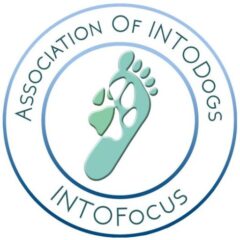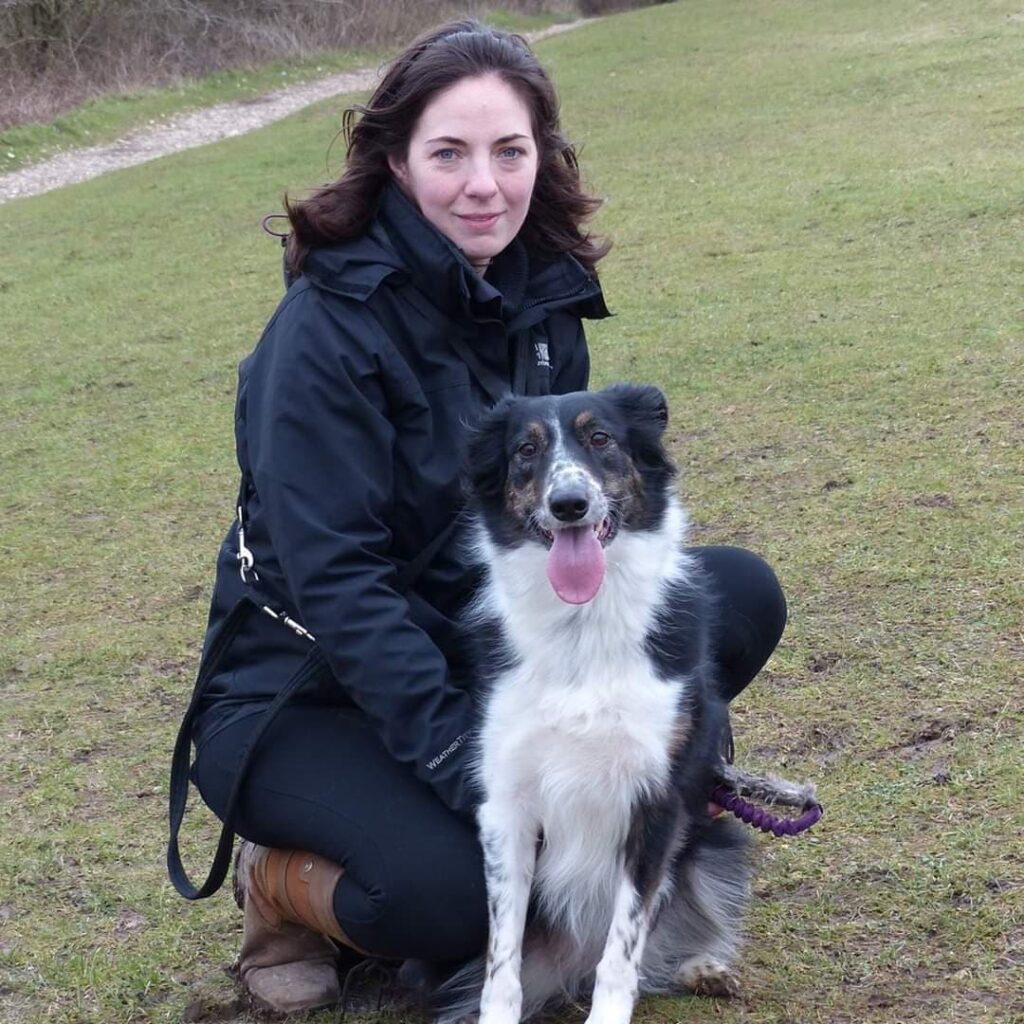
INTOFocus interviewed Dr Isla Fishburn on her approach to working with dogs to achieve the best possible outcomes. Her approach has been shared with many over the years, and more information can be found on her website.
You have been quoted as saying: Your dog is more than just “a dog.” Can you expand on this?
I’m so excited that more and more canine professionals are interested in how to not only support a dog’s learning but also just what is involved in co-existing with a dog and providing them with a good life. I really want us to step away from a cookie-cutter approach that makes us believe all dogs are the same, that they learn in the same way and that the predominant focus of having a “good dog” is in training them. Teaching a dog is beneficial but is just a part of what a dog is as a whole organism.
So, each dog is treated as an individual, but you also have views on how we all interconnect?
Yes, that is why I like to focus and teach about how we need to consider a dog as an ecosystem. By definition, an ecosystem is a “complex network of interconnected systems which emphasise the interaction between living parts and the flow of energy between these parts.” Basically, a dog is an energy system, a combined mass of vibration and energy that makes up the physical being a dog is. If only we could see it, beneath, within and around a dog, we would see these flowing parts of energy and vibration. As an ecosystem, a dog is not separate from any other living thing that exists – you, your cat, your neighbour, your community…everything.
Everything that exists is interconnected, and everything that exists is but vibration and frequency. Everything has the potential to affect a dog’s vibration and this can lead to physical, mental, emotional and spiritual distresses in the body – it can affect a dog’s behaviour, physical illness, immune health and overall wellness.
If everything is a vibration, then our bodies and that of our dogs must be used to fluctuations in this. So why is it a big deal?
I’m concerned that we live in a world that is distorted and out of balance. I’m concerned that we live in a world where most believe it is the norm to lead a life that is filled with pressure, fast pace, quick resolutions, and expectations met. I mean, if there is one thing a dog can teach us, it’s about how we should be doing less, not more.
That’s interesting, so, we can learn a lot from them?
That is the beauty of dogs and other non-human animals. They simply exist and feel their way through life. Humans can and should be doing the same but, for most, one thing gets in the way, and that is our limiting belief systems. No other animal has limiting belief systems that tell the dog what is right or wrong, what should be so, what is perfect or unacceptable, what they should or should not be. The reality is that everything is perfect just as it is, including you!
Most humans exist from a place where the belief systems they create, are taught or have heard keep their very ecosystem on high alert. Most humans are plagued with thoughts that are not even true but simply what they believe – about themselves, about others, about their dog. Whilst this is a concern as and of itself, it is also a concern because of the effect it can have on a dog.
I’ve just shared that everything is a vibration. Even the thought a person has is a vibration. A dog and their human guardian are interconnected and so the vibrational health of a guardian can and does affect the vibrational health and state of a dog. I know this from my own personal experience as well as from the work that I do with dogs and humans.
How would you describe the dogs that you work with?
I largely work with dogs that are misunderstood; dogs that are sensitive to their survival or that struggle to cope, some may even use the term “reactive,” but that word doesn’t give a true representation of what is occurring for a dog who struggles to cope at a moment in time. Besides, the word is absolute, is final and is a label. It is a belief system in and of itself depending on a person’s perspective of what reactive means to them.
Dogs that are sensitive to their survival are great indicators and teachers of how life is an ecosystem of vibration and energy. For example, one of my dogs that finds life a challenge can detect adrenalin in a person 48 hours after they have been to the gym. That is enough for her ecosystem to alter its vibrational state and be thrown in to survival mode. This is how sensitive her ecosystem and vibration is as a result of trauma. Vibrationally speaking, I’ve been able to make a huge difference in the time it takes for her to recover from an unexpected event that triggers her. What would have taken four days now can take as little as ten minutes.
So if everything is a vibration, if we just allow a dog to have a good experience with everything it will see in its life, that will help the dog’s ecosystem and vibrational state?
This is what I want people to understand; anything and everything is a vibration. Anything and everything that a dog sees, hears, tastes, touches, smells or feels from BEFORE birth to the present day can influence their vibration. This is true for any animal, including humans. The vibrational health and experiences of an individual influences that individual’s ecosystem; physically, mentally, emotionally and spiritually. In fact, it is suggested amongst some scientists that afflictions, allergies and obsessions or addictions (in humans) are a result of unresolved emotional distresses within an individual’s ecosystem.
The challenge with the dog-human co-existence is that most humans and, therefore their dogs, live in a way that keeps them in a prolonged state or constant state of distress. The key point here is that this distress is experienced without enough recovery time – we can be in a permanent carousel of distress. Remember, thoughts are also a vibration, so what we think can be enough to put our own ecosystem under distress and, let’s face it, how many of us actually pay attention to our thoughts?
Yes, we often hear about the ‘inner voice’ or the narrative that plays in the mind of each individual.
Panicking about being on time, a deadline, if you are good enough (which you are, by the way), if your dog is good enough (which they are, by the way), your day ahead, wondering if you made the right decision (which you did, by the way) and playing scenarios in your mind over and over again are all moments that place a person’s ecosystem under stress.
Of course, a dog’s own life experiences will also affect their vibration and how they respond but as there is a growing number of canine professionals now recognising that when it comes to a dog’s behaviour, we can’t just explore the behaviour and what the dog needs to learn to overcome this. Besides, who says it’s right for the dog to overcome anything? That could just be another belief system we have told ourselves. It could simply be who the dog is or even what the dog is showing up in itself as a reflection of what the guardian is yet to overcome (perhaps a talk for another time).
As everything is a vibration, we have to look so much deeper. Nothing is separate, and that includes not only the connection between you and your dog but also the dog’s own ecosystem. Where there is distress, there is distress. Distress is inflammation. It is prolonged arousal. It is a vibrational surge of energy that can only be sustained for so long before there is a crash. So, where a dog may have emotional distress may lead to physical distress. Where a dog has digestive system distress can lead to nervous system and immune system distress – do you see how everything is interconnected?
Taking it further, if you then imagine that you and your dog are now merely two systems operating within an organism, you can see how your own vibration can influence your dog’s vibration. You can see how any vibration can influence you and your dog’s vibration.
So our dog is an ecosystem and vibration. You like to refer to how a dog’s ecosystem can be nourished. Can you explain why one area of nourishment interests you the most when it comes to supporting our dogs?
There is much emphasis now on how to support our dogs to live a long and healthy life. Here, I like to consider this as nourishment. How do we nourish a dog’s ecosystem so that it is fed well in all aspects of nourishment; physically, mentally, emotionally and spiritually? It is the latter that I find most intriguing as I still find it is a part of a dog’s ecosystem that is being overlooked. Yet, if a dog is not spiritually nourished, this can lead to emotional, mental and physical states of distress.
I’m sure many will be aware of the growing interest in exploring the health impacts of physical nourishment through diet and exercise, as well and emotional and mental nourishment upon health, wellness and state. I’m so excited that these topics are being addressed more and more for us, other animals and the state of the planet as a whole ecosystem too. It’s wonderful to see more interest from dog guardians wanting to know more about what is more beneficial to feed their dog, how chemical products can affect their dog’s physical ecosystem (and entire ecosystem at that) and how to support their dog emotionally. When it comes to nourishing our dogs we seem to be “nailing it” more and more in their physical, mental and emotional nourishment. Of course, that is because we are focusing more and more on these aspects of nourishment for ourselves too.
But what about spiritual nourishment, or malnourishment, as the case may be?
For me, I’m still aware of how less focus is placed on this aspect of anyone’s nourishment, yet it can have some of the biggest effects on an animal’s physical, emotional and mental nourishment – on their ecosystem. In the work I do with humans and dogs, I am aware of just how many are living from spiritual malnourishment and, when we do, so do our dogs. Spiritual nourishment is our essence, our life force, our true vibration. Spiritual malnourishment can create all manner of disruptions in an animal’s ecosystem; from behavioural and emotional distress to physical disease.
When I am working with the dogs that I do, I take a whole ecosystem approach to what supports the dog’s needs and needs to be nourished. Is it the dog’s physical nourishment, mental nourishment, emotional nourishment, spiritual nourishment or all four!
I have worked with many dogs now where exploring their spiritual nourishment alone, or that of their human guardian’s, has created a change in the dog’s ecosystem, behaviour and health.
When it comes to wanting the best for your dog, not only do you need to consider the more understood aspects of your dog’s nourishment, it is also helpful to consider if you and/or your dog have spiritual malnourishment and how this might be affecting their ecosystem and vibrational health.
Thanks Isla, it sounds like we have many areas to consider, and I agree that we certainly need to improve our ability to consider all aspects of the dogs and, of course, ourselves.





